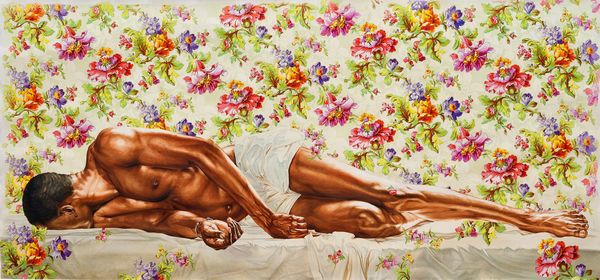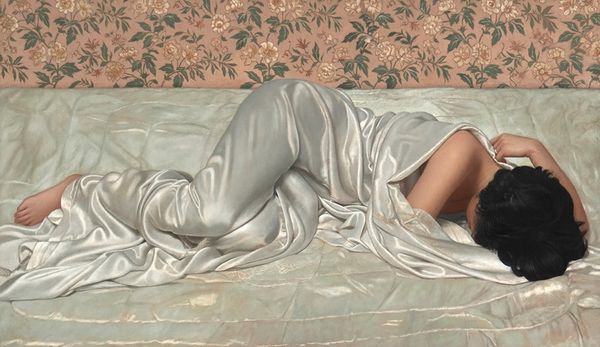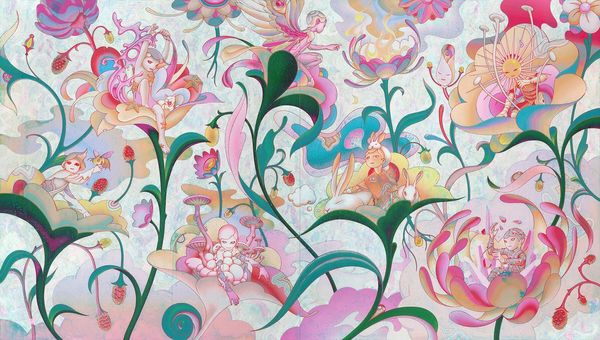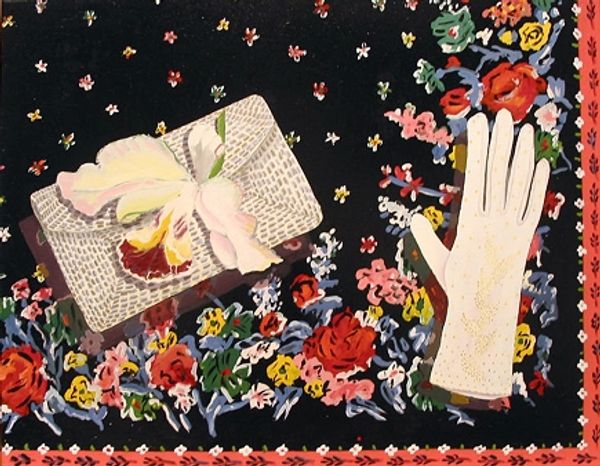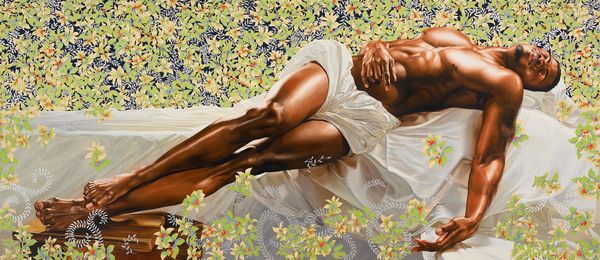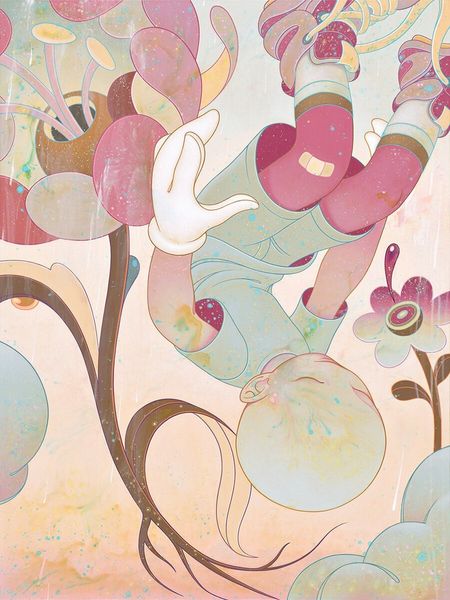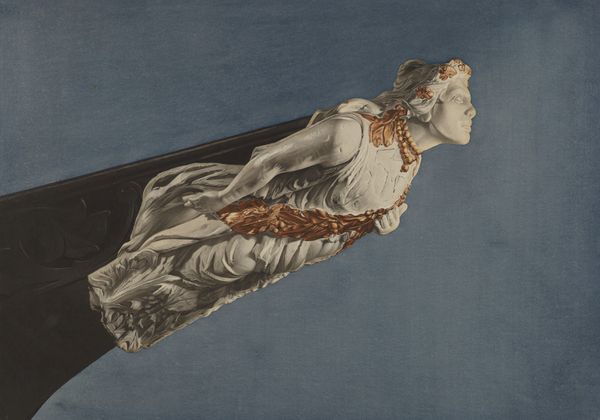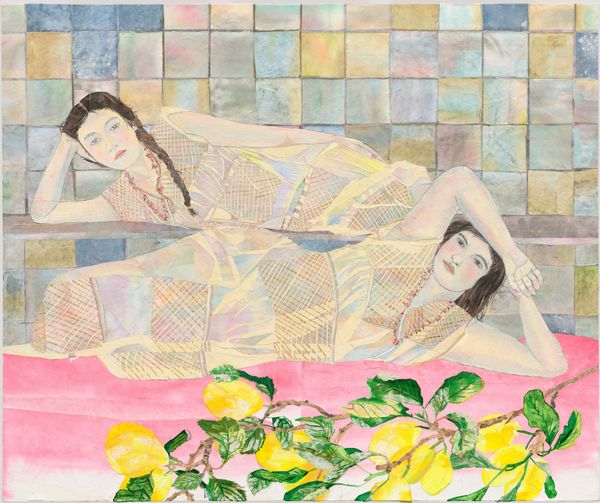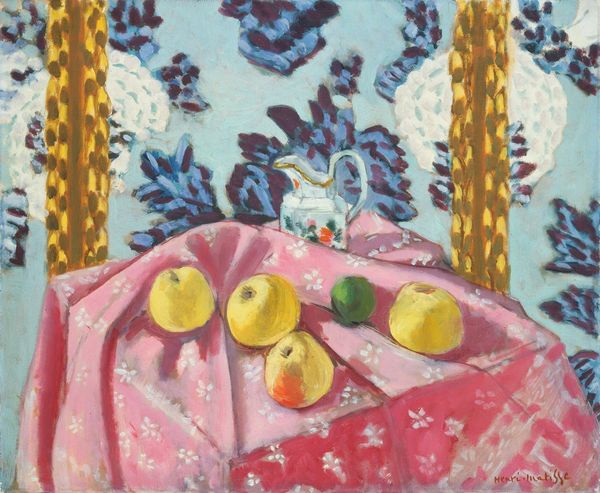
painting, oil-paint, appropriation
#
portrait
#
pattern-and-decoration
#
contemporary
#
painting
#
oil-paint
#
appropriation
#
figuration
#
postcolonial-art
#
appropriation
#
naive art
Copyright: Modern Artists: Artvee
Editor: Kehinde Wiley's "The Veiled Christ," created in 2008, is an oil painting, a contemporary take on a classic sculpture. I find the contrast between the figure and the ornate background striking. How do you interpret this work? Curator: The initial assessment focusing on the painting's inherent elements—subject, scale, composition, colour, and motif—is very helpful to understand the dialogue Wiley seeks. The prone male figure is shrouded in drapery that subtly alludes to classical sculpture. This contrast you notice between the floral background and the realistic treatment of the figure immediately points to the inherent dualities that define the artwork. Can you describe the figure’s pose? Editor: It’s very relaxed, almost passive. But the heavy drapery gives it a monumental feeling. It is as if he wants us to be looking. Curator: Exactly. Wiley seems intent to subvert the tradition of power and veneration. It demands an investigation into form, the layering of image-making, surface, texture and colour relationships. Note the floral designs, repeated in the back, flattening the field. Do they take on the symbolism and narrative weight? Editor: Now that you mention it, I see how the background contributes. So it is as much about the patterns and flatness as it is about the figure itself? Curator: Precisely. We read these signs within art traditions, but they shift with intentionality. Looking at "The Veiled Christ", Wiley subverts not just our notions of visibility but, more fundamentally, those of power, using colour, and composition. Editor: That’s fascinating. I’ll never look at floral patterns the same way again.
Comments
No comments
Be the first to comment and join the conversation on the ultimate creative platform.

